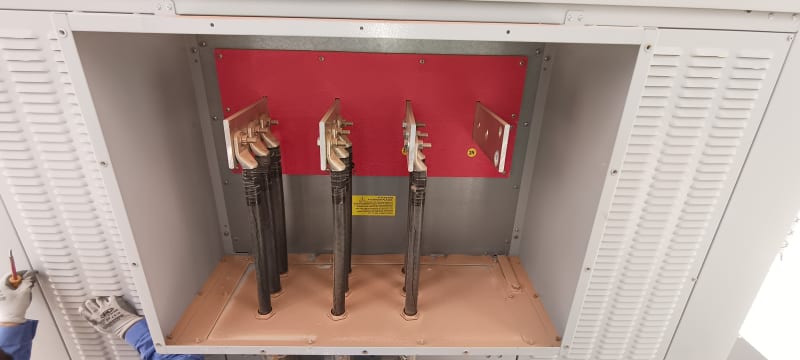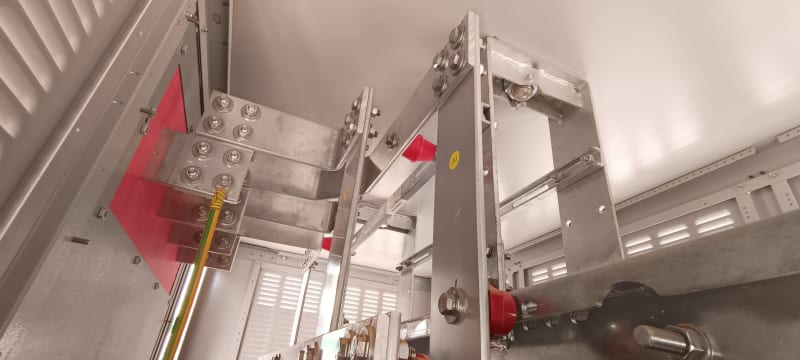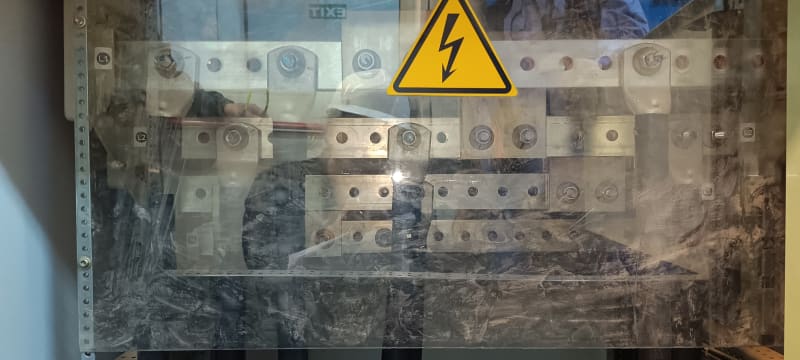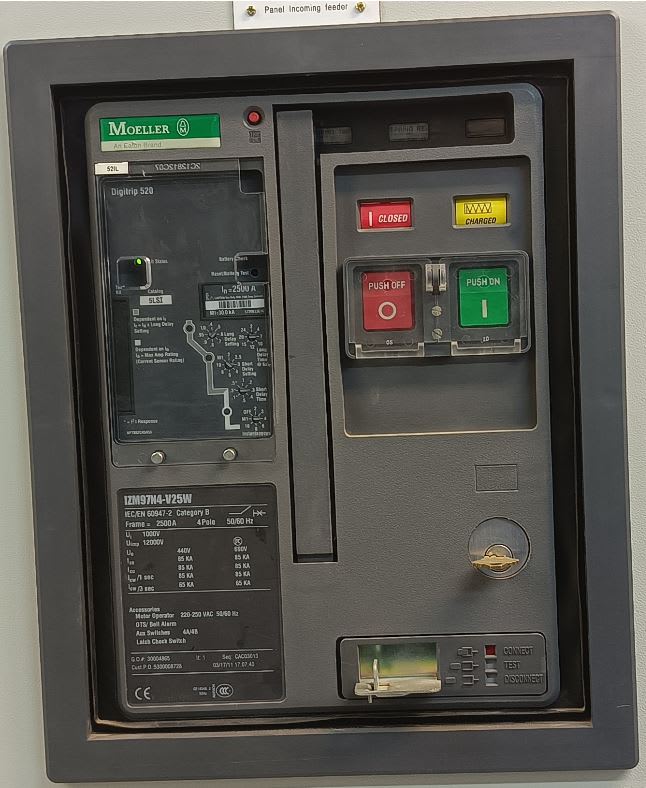341968
Electrical
- Sep 20, 2003
- 31
Could you please guide me that
I have LV transformer Star connected.
Only 3-phase are going to panel.
Star point(Neutral bus) of TR is only solidly grounded.
Panel has neutral bus BUT empty (No cables), No Ground.
Reason not being using Neutral is completely balanced load (4-Motors DOL and 8-Motors through VFD Each 90KW).
My Question: Can I make connection (Cabling) between TR neutral and Main panel Neutral, as I need 230V for ACB motor. That I want to turn it into TNS system. Doing so any adverse effects? Any recommendation?



I have LV transformer Star connected.
Only 3-phase are going to panel.
Star point(Neutral bus) of TR is only solidly grounded.
Panel has neutral bus BUT empty (No cables), No Ground.
Reason not being using Neutral is completely balanced load (4-Motors DOL and 8-Motors through VFD Each 90KW).
My Question: Can I make connection (Cabling) between TR neutral and Main panel Neutral, as I need 230V for ACB motor. That I want to turn it into TNS system. Doing so any adverse effects? Any recommendation?





